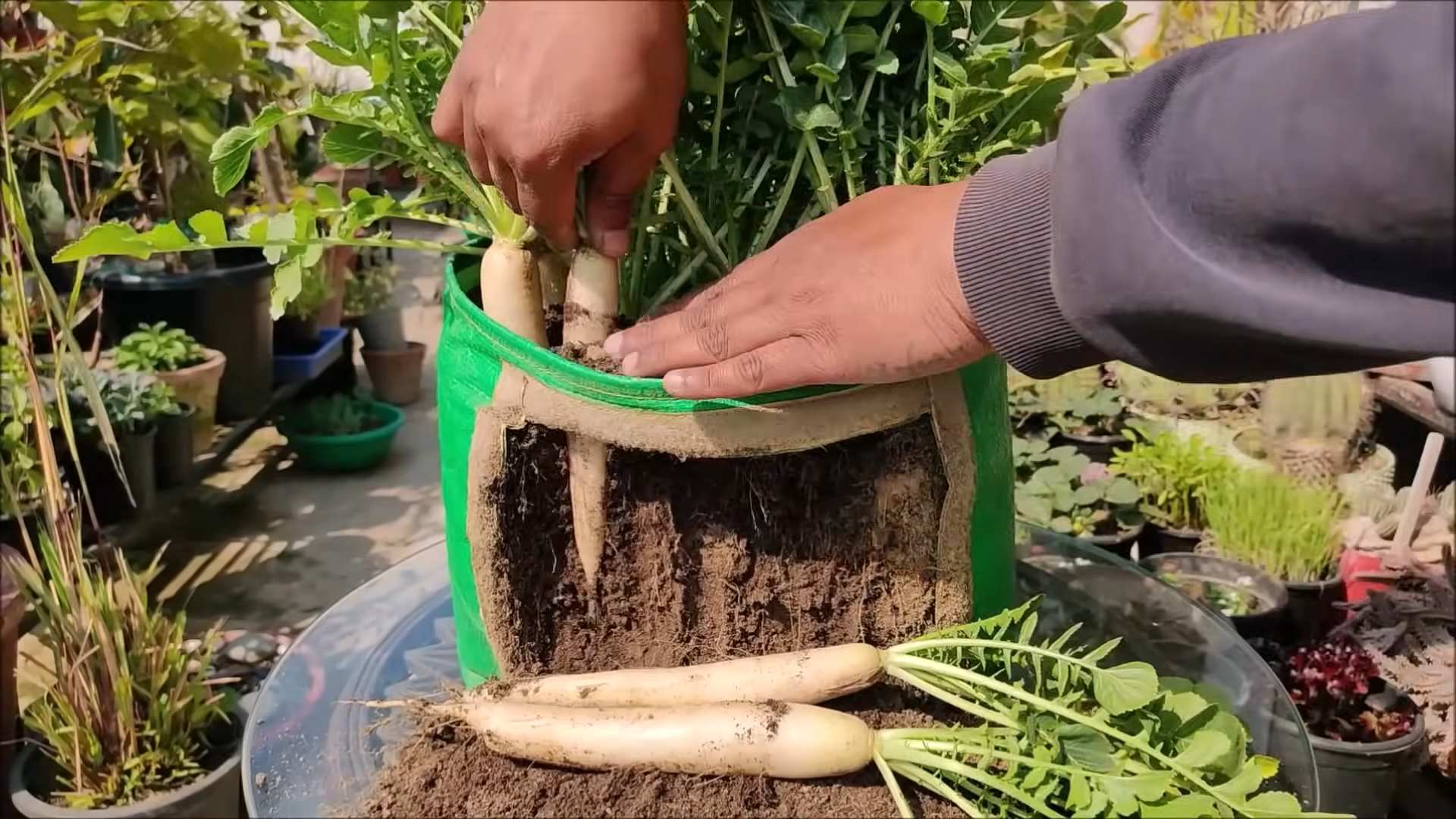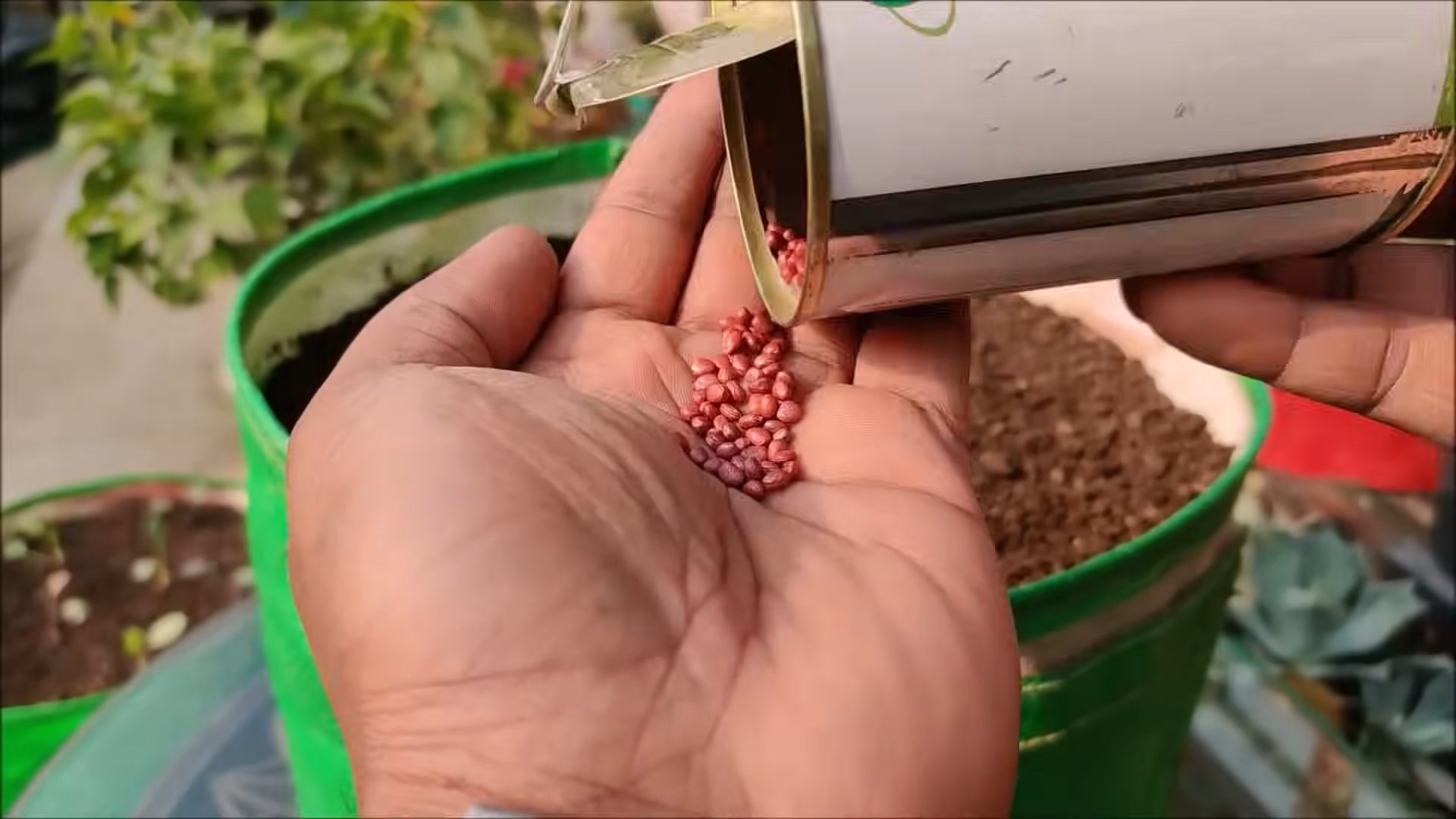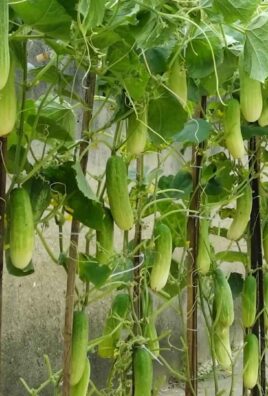Grow White Radish Quickly and enjoy the crisp, peppery flavor of homegrown radishes in just a few weeks! Imagine plucking fresh, vibrant white radishes straight from your garden, adding a delightful crunch to your salads, or enjoying them as a refreshing snack. This isn’t just a dream; it’s an achievable reality with a few simple DIY tricks and hacks.
Radishes, with their humble origins, have a rich history dating back to ancient times. Cultivated in Egypt before the pyramids were even built, they were valued for their nutritional benefits and ease of cultivation. From the Mediterranean to Asia, different varieties of radishes have become staples in various cuisines, each offering a unique taste and texture. The white radish, in particular, is prized for its mild flavor and crispness, making it a versatile ingredient in many dishes.
But let’s be honest, sometimes waiting for your garden to yield results can feel like an eternity. That’s where these DIY tricks come in! We all want to enjoy the fruits (or in this case, vegetables) of our labor sooner rather than later. Whether you’re a seasoned gardener or just starting out, these tips will help you grow white radish quickly and efficiently, maximizing your harvest and minimizing your wait time. I’m excited to share these simple yet effective methods that will have you enjoying fresh, homegrown radishes in no time!

Grow White Radishes in Just 3 Weeks: A DIY Guide
Hey there, fellow gardening enthusiasts! Are you craving the crisp, peppery bite of fresh white radishes but don’t want to wait an eternity to harvest them? Well, you’re in luck! I’m going to share my super-speedy method for growing white radishes from seed to table in as little as three weeks. Yes, you read that right – three weeks! This isn’t some magical trick; it’s all about understanding radish needs and optimizing their growing environment. Let’s get started!
What You’ll Need
Before we dive into the nitty-gritty, let’s gather our supplies. You’ll need:
* Radish Seeds: Choose a quick-maturing variety like ‘Cherry Belle’ or ‘French Breakfast’. These are readily available at most garden centers.
* Well-Draining Soil: Radishes thrive in loose, fertile soil. A mix of compost, potting soil, and a little bit of sand works wonders.
* Container or Garden Bed: You can grow radishes in containers or directly in the ground. Just make sure the area gets plenty of sunlight.
* Watering Can or Hose: Consistent moisture is key for rapid radish growth.
* Fertilizer (Optional): A balanced liquid fertilizer can give your radishes an extra boost.
* Gardening Gloves: To keep your hands clean and protected.
* Row Cover (Optional): To protect your seedlings from pests and harsh weather.
Preparing Your Growing Space
The secret to fast-growing radishes lies in providing them with the ideal environment right from the start. This means preparing your soil and choosing the right location.
1. Choose a Sunny Spot: Radishes need at least 6 hours of direct sunlight per day. If you’re growing them indoors, consider using a grow light.
2. Prepare the Soil: Whether you’re using a container or a garden bed, make sure the soil is loose and well-draining. Radishes don’t like soggy feet! Amend the soil with compost to improve fertility and drainage. I like to use a 50/50 mix of potting soil and compost.
3. Remove Rocks and Debris: Radishes need room to grow, so remove any rocks, sticks, or other debris from the soil. This will ensure that the roots can develop properly.
4. Level the Soil: Rake the soil to create a smooth, even surface. This will make it easier to sow the seeds evenly.
Sowing the Seeds
Now comes the fun part – planting the radish seeds! This is a crucial step, so pay close attention to the spacing and depth.
1. Create Shallow Furrows: Use your finger or a small tool to create shallow furrows in the soil, about 1/2 inch deep and 1 inch apart.
2. Sow the Seeds: Sprinkle the radish seeds evenly along the furrows, spacing them about 1 inch apart. Don’t overcrowd them, or they’ll compete for resources.
3. Cover the Seeds: Gently cover the seeds with a thin layer of soil.
4. Water Thoroughly: Use a watering can or hose to water the soil gently but thoroughly. Make sure the soil is moist but not waterlogged.
5. Label Your Rows: It’s always a good idea to label your rows with the date you planted them. This will help you keep track of their progress.
Caring for Your Radishes
Consistent care is essential for rapid radish growth. This includes watering, fertilizing, and protecting your plants from pests.
1. Water Regularly: Radishes need consistent moisture to grow quickly. Water them deeply whenever the top inch of soil feels dry to the touch. Avoid overwatering, as this can lead to root rot. I usually water mine every other day, but this will depend on the weather and soil conditions.
2. Thin Seedlings (If Necessary): If your seedlings are too crowded, thin them out to about 1 inch apart. This will give them more room to grow and prevent them from competing for resources.
3. Fertilize (Optional): If you want to give your radishes an extra boost, you can fertilize them with a balanced liquid fertilizer every two weeks. Follow the instructions on the fertilizer label. I personally use a fish emulsion fertilizer, which is a great organic option.
4. Weed Regularly: Keep your radish patch free of weeds. Weeds compete with radishes for nutrients and water, so it’s important to remove them regularly.
5. Protect from Pests: Radishes are susceptible to pests like flea beetles and root maggots. Cover your seedlings with a row cover to protect them from these pests. You can also use organic pest control methods, such as neem oil.
Harvesting Your Radishes
The moment you’ve been waiting for! Harvesting your radishes at the right time is crucial for getting the best flavor and texture.
1. Check for Maturity: Radishes are typically ready to harvest in about 3 weeks, but this can vary depending on the variety and growing conditions. Check the size of the radish roots by gently brushing away the soil around the base of the plants. They should be about 1 inch in diameter.
2. Harvest Carefully: To harvest your radishes, gently pull them out of the soil by the greens. If the soil is dry, you may need to loosen it with a trowel first.
3. Wash and Store: Wash your radishes thoroughly to remove any dirt or debris. Store them in the refrigerator in a plastic bag or container. They will keep for about a week.
4. Enjoy! Now it’s time to enjoy the fruits (or rather, roots) of your labor! Radishes are delicious eaten raw in salads, sandwiches, or as a snack. You can also cook them in stir-fries or soups.
Troubleshooting
Even with the best care, you may encounter some problems while growing radishes. Here are a few common issues and how to solve them:
* Radishes are too small: This could be due to overcrowding, lack of sunlight, or poor soil. Thin your seedlings, make sure they’re getting enough sunlight, and amend the soil with compost.
* Radishes are cracked: This is usually caused by inconsistent watering. Make sure you’re watering your radishes regularly and deeply.
* Radishes are bitter: This can be caused by hot weather or letting the radishes grow too large. Harvest your radishes when they’re still small and tender.
* Pests are attacking my radishes: Use a row cover to protect your seedlings from pests. You can also use organic pest control methods, such as neem oil.
Tips for Success
Here are a few extra tips to help you grow the best radishes ever:
* Succession Planting: Plant a new batch of radish seeds every week or two to ensure a continuous harvest.
* Choose the Right Variety: Different radish varieties have different maturity times. Choose a quick-maturing variety for the fastest results.
* Don’t Overwater: While radishes need consistent moisture, overwatering can lead to root rot.
* Harvest Promptly: Radishes can become bitter and woody if they’re left in the ground too long. Harvest them when they’re still small and tender.
* Enjoy the Greens: Don’t throw away the radish greens! They’re delicious in salads, stir-fries, or soups.
Why This Method Works
So, what makes this method so effective? It’s all about creating the optimal conditions for rapid radish growth. By providing them with plenty of sunlight, well-draining soil, consistent moisture, and protection from pests, you’re giving them everything they need to thrive. Plus, choosing a quick-maturing variety ensures that you’ll be harvesting your radishes in just a few weeks.
Experiment and Have Fun!
Gardening is all about experimentation, so don’t be afraid to try new things and see what works best for you. With a little bit of care and attention, you’ll be enjoying fresh, homegrown radishes in no time! Happy gardening!

Conclusion
So, there you have it! Growing white radishes quickly at home is not only achievable but also incredibly rewarding. We’ve walked you through the essential steps, from seed selection and soil preparation to watering techniques and pest control, all designed to accelerate the growth of these crisp, peppery delights.
Why is this DIY trick a must-try? Because it puts you in complete control of your food source. You know exactly what goes into your radishes – no mystery chemicals or questionable farming practices. Plus, the satisfaction of harvesting your own produce, especially when you’ve nurtured it from a tiny seed, is unparalleled. Imagine the pride you’ll feel serving a salad featuring radishes you grew yourself!
But the benefits extend beyond personal satisfaction. Growing your own radishes is also a cost-effective way to enjoy fresh, healthy vegetables. Radishes from the grocery store can be surprisingly expensive, especially if you’re buying organic. With a small investment in seeds and a little bit of effort, you can have a continuous supply of these versatile vegetables.
And let’s not forget the environmental impact. By growing your own food, you’re reducing your carbon footprint. You’re eliminating the need for transportation, packaging, and refrigeration, all of which contribute to greenhouse gas emissions.
Now, for a few suggestions and variations to take your radish-growing game to the next level:
* Succession Planting: Plant a new batch of seeds every week or two to ensure a continuous harvest throughout the growing season.
* Companion Planting: Radishes are excellent companion plants for carrots, lettuce, and spinach. They help to deter pests and improve soil health.
* Container Gardening: If you don’t have a garden, you can easily grow radishes in containers on your balcony or patio. Just make sure the containers are at least 6 inches deep.
* Radish Varieties: Experiment with different varieties of white radishes, such as ‘White Icicle’ or ‘French Breakfast’, to find your favorite flavor and texture. You can even try growing other types of radishes, like red or black radishes, for a bit of variety.
* Radish Greens: Don’t throw away the radish greens! They’re packed with nutrients and can be used in salads, soups, or stir-fries.
We’ve given you all the tools you need to successfully grow white radish quickly. Now it’s your turn to put them into action. Don’t be afraid to experiment, learn from your mistakes, and most importantly, have fun!
We’re confident that you’ll be amazed at how easy and rewarding it is to grow your own radishes. So, grab some seeds, get your hands dirty, and start growing!
We’d love to hear about your experience. Share your tips, tricks, and photos with us in the comments below. Let’s create a community of radish-growing enthusiasts! What are you waiting for? Get growing!
Frequently Asked Questions (FAQ)
How long does it really take to grow white radishes quickly?
Typically, white radishes are known for their rapid growth. Under optimal conditions, you can expect to harvest them in as little as 22 to 30 days from planting. However, the exact time can vary depending on factors like the specific radish variety, soil quality, temperature, and sunlight exposure. Providing consistent moisture and well-drained soil is crucial for quick growth. Remember, warmer temperatures generally promote faster germination and growth, but extreme heat can cause radishes to become pungent or bolt (go to seed).
What kind of soil is best for growing white radishes quickly?
Radishes thrive in loose, well-drained soil that is rich in organic matter. Compacted or heavy clay soil can hinder root development and result in misshapen radishes. Before planting, amend your soil with compost or well-rotted manure to improve drainage and fertility. A slightly acidic to neutral soil pH (around 6.0 to 7.0) is ideal. If your soil is particularly heavy, consider growing radishes in raised beds or containers filled with a suitable potting mix.
How much sunlight do white radishes need to grow quickly?
White radishes require at least 6 hours of direct sunlight per day to grow quickly and develop properly. While they can tolerate some shade, insufficient sunlight can lead to leggy growth and smaller radishes. If you’re growing radishes indoors, use grow lights to supplement natural sunlight. Ensure the lights are positioned close enough to the plants to provide adequate illumination.
How often should I water my radishes?
Consistent moisture is essential for growing white radishes quickly. Water your radishes regularly, especially during dry periods. Aim to keep the soil consistently moist but not waterlogged. Overwatering can lead to root rot, while underwatering can cause the radishes to become tough and bitter. A good rule of thumb is to water deeply whenever the top inch of soil feels dry to the touch. Mulching around the plants can help to retain moisture and suppress weeds.
What are some common pests and diseases that affect radishes, and how can I prevent them?
Radishes are generally relatively pest-resistant, but they can be susceptible to certain pests and diseases, including flea beetles, root maggots, and fungal diseases. Flea beetles can chew small holes in the leaves, while root maggots can damage the roots. To prevent these problems, practice crop rotation, use row covers to protect the plants, and keep the garden free of weeds and debris. Fungal diseases can be prevented by ensuring good air circulation and avoiding overwatering. If you notice any signs of pests or diseases, treat them promptly with appropriate organic or chemical controls.
Can I grow white radishes in containers?
Yes, you can absolutely grow white radishes in containers! This is a great option if you have limited space or poor soil. Choose containers that are at least 6 inches deep and have drainage holes. Fill the containers with a well-draining potting mix. Sow the seeds directly into the containers, spacing them about an inch apart. Water regularly and fertilize with a balanced fertilizer every few weeks. Place the containers in a sunny location.
What are the signs that my radishes are ready to harvest?
The best way to determine if your radishes are ready to harvest is to check their size. Most white radish varieties are ready to harvest when they are about 1 inch in diameter. You can also gently brush away the soil around the base of the plant to check the size of the root. If the radishes are too small, they may be bitter. If they are too large, they may be tough and woody. Harvest the radishes by gently pulling them from the soil.
Why are my radishes cracking?
Cracking in radishes is often caused by inconsistent watering. If the soil dries out and then is suddenly saturated, the radishes can absorb water too quickly, causing them to swell and crack. To prevent cracking, water your radishes regularly and consistently, especially during dry periods. Mulching around the plants can also help to retain moisture and prevent the soil from drying out too quickly.
Why do my radishes taste bitter?
Bitter radishes can be caused by several factors, including hot weather, dry soil, and overmaturity. Hot weather can cause radishes to become pungent and bitter. Dry soil can also stress the plants and lead to bitterness. Overmature radishes can become tough and bitter as well. To prevent bitter radishes, grow them in cooler weather, water them regularly, and harvest them when they are young and tender.
Can I eat the radish greens?
Yes, radish greens are edible and nutritious! They have a peppery flavor similar to the radishes themselves. You can use them in salads, soups, stir-fries, or as a garnish. Choose young, tender greens for the best flavor and texture. Wash the greens thoroughly before using them.





Leave a Comment